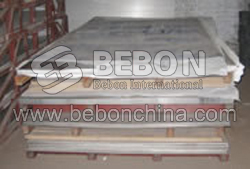Major Elements of Stainless Steel
Stainless steel is divided into austenitic, ferritic, martensitic and duplex by the difference of crystal structure. 200 series are austenitic iron-chromium-nickel-manganese alloys. 300 series are austenitic iron-chromium-nickel alloys. 400 series are ferritic and martensitic alloys.

In addition to iron, carbon, and chromium, stainless steel may also contain other elements, such as nickel, niobium, molybdenum, and titanium. These elements and their content matter stainless steels’ properties like corrosion, heat resistant and mechanical properties. Below are the major elements of stainless steel.
Chromium:
Form a passive surface film to make stainless steel resistant to corrosion.
Increase the scaling resistance, tensile strength and wear resistance.
Manganese:
Improve hot-working properties.
Up to 2% has no effect on strength, ductility and toughness.
Above 2% increases yield strength and tensile strength (as in the 201 grade).
Stabilize the austenitic structure.
Molybdenum:
Increase creep resistance; strength at high temperatures; and corrosion resistance, particularly in sulfite, sulfate, acetic acid and acetate solutions and in a salt-water atmosphere.
Expand range of passivity and counteracts tendency to pit.
Nickel:
Stabilize the austenitic structure.
Increase high-temperature strength; ductility, which makes stainless steel easier to form; and corrosion resistance, particularly in industrial and marine atmospheres and the chemical, food and textile processing industries.
Silicon:
Increase scaling resistance by forming a tight initial scale that will withstand cyclic temperature changes; also slightly increases tensile strength and hardness.
Resist carburizing at high temperatures.
The chemical composition matters stainless steels’ properties a lot. If you are interested in stainless steel and the chemical composition, please contact us.
